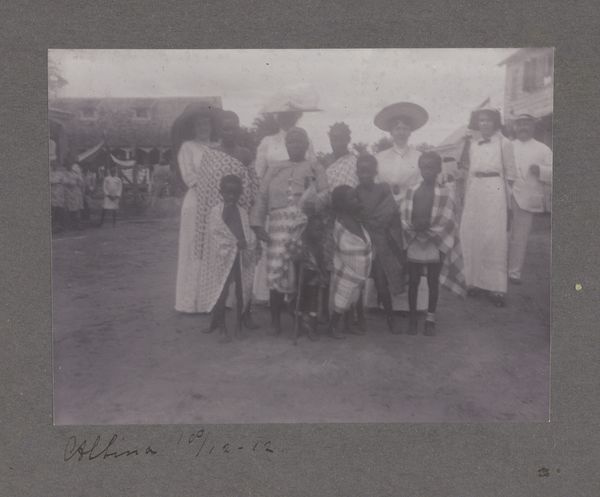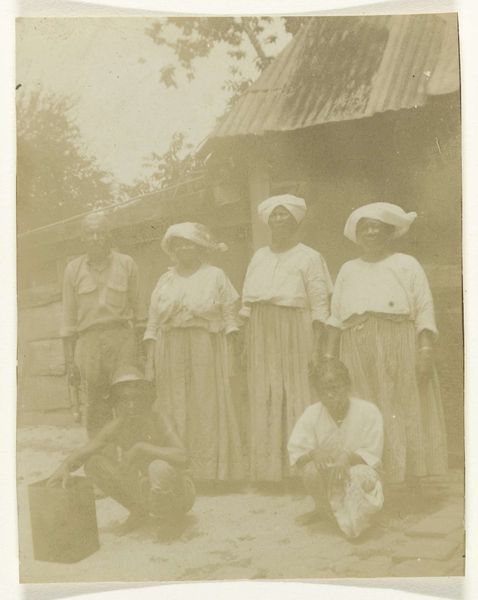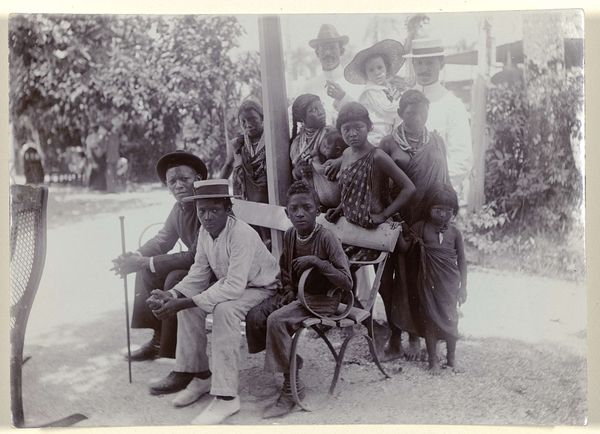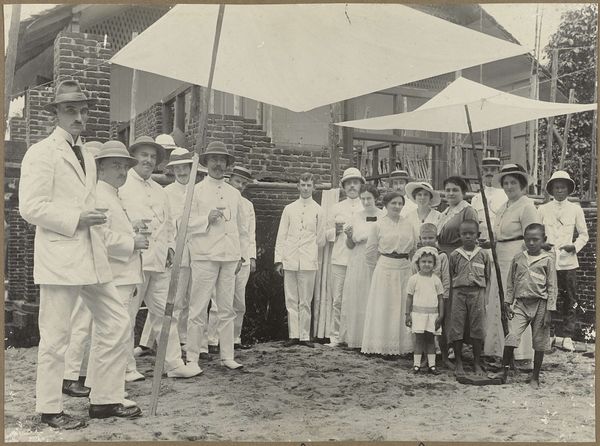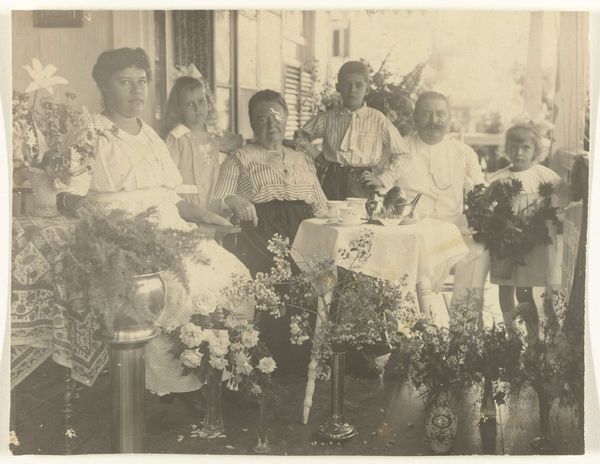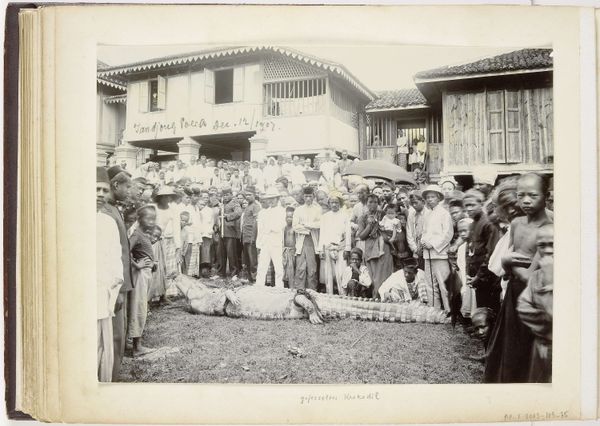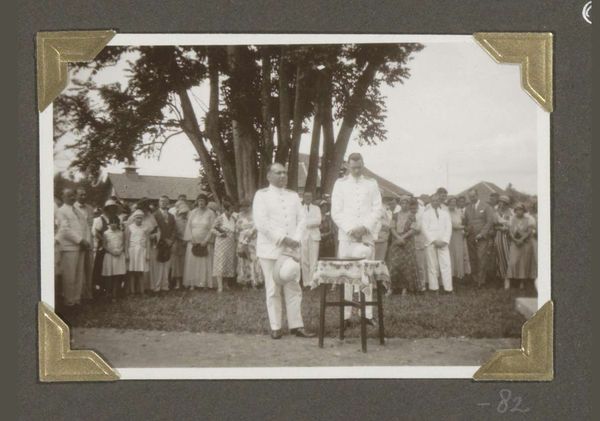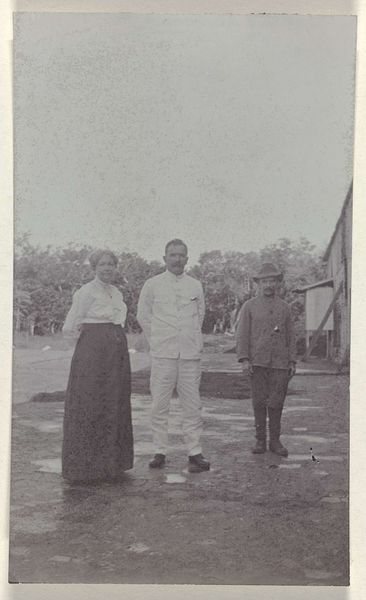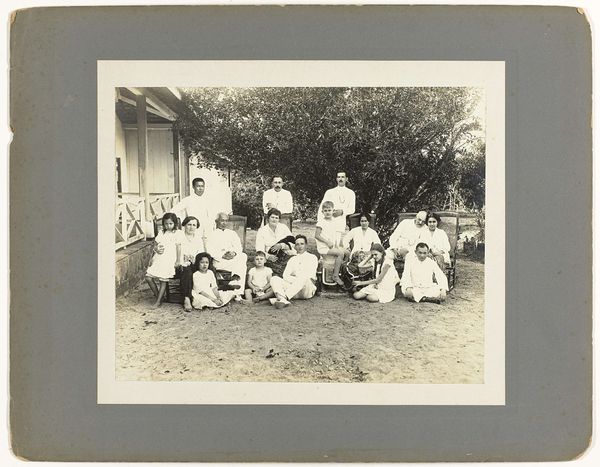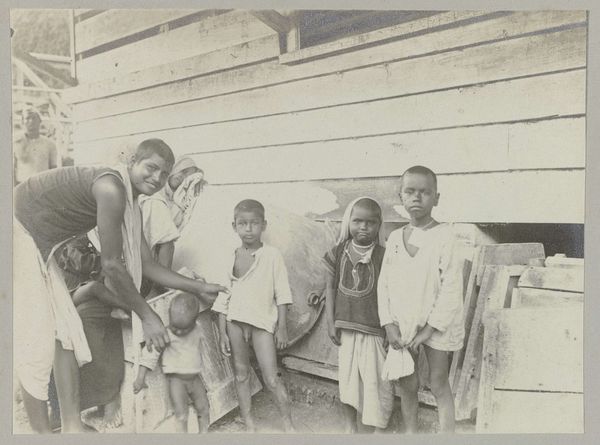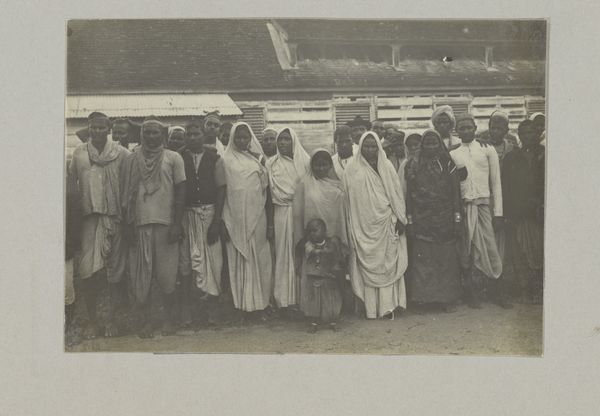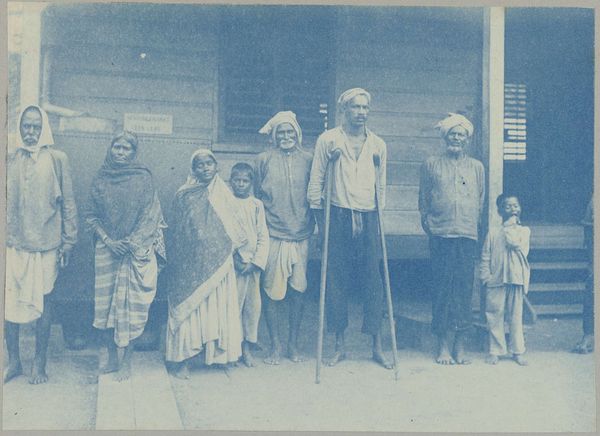
De familie Gonggrijp poseert met Surinaamse kinderen in Albina, Suriname Possibly 1912
0:00
0:00
gelatin-silver-print, photography, gelatin-silver-print
#
gelatin-silver-print
#
photography
#
gelatin-silver-print
Dimensions: height 80 mm, width 110 mm
Copyright: Rijks Museum: Open Domain
Curator: Before us, we have an intriguing gelatin-silver print. Its title suggests a scene in Albina, Suriname, possibly from 1912: "De familie Gonggrijp poseert met Surinaamse kinderen in Albina, Suriname." Editor: Immediately, the stark contrast strikes me—the all-white attire of the Gonggrijp family against the darker skin tones and modest clothing of the Surinamese children. The composition emphasizes this division. Curator: Absolutely. White, particularly in the colonial context, often symbolized purity, authority, and even a sort of supposed moral superiority. The positioning, with the family centrally located and the children arranged almost as objects around them, reinforces this hierarchy. It resonates with established tropes of Orientalism. Editor: The tonal range is quite limited. Look at how the diffuse light softens the details. The formal dress and hats further emphasize their distance from the surroundings. There’s an intentional theatricality. Curator: Indeed. And note how photography itself becomes a tool for asserting dominance. This staged photo becomes a lasting record of a power dynamic. It echoes a broader colonial narrative prevalent at the time, not just in Suriname, but throughout colonized territories. The gaze is so deliberate, so assured in its entitlement. It almost feels ethnographic in intent, but functions to reinforce rather than understand. Editor: Ethnographic in so far as it reduces subjects to objects in service of a controlling idea? Agreed. Even the textural contrast interests me; smooth fabrics versus coarse cloth and exposed skin... they amplify those power dynamics you pointed out. The umbrella seems like a signifier of bourgeois formality amidst poverty. Curator: Precisely! We’re not simply seeing a photograph, but a layered cultural document filled with implicit messages. Its simplicity belies the complexity of its underlying narrative, one woven with threads of colonial power, cultural imposition, and social distance. Editor: Considering it through the lens of the era's power structures offers vital context to interpreting the artistic intentions that crafted this visual rhetoric. So much semiotic weight rests within its apparently simple formal elements. Curator: Thank you for joining me in unpacking the loaded visual story present in this powerful photograph. Editor: A pleasure, it really highlights the constructed nature of photographic 'truth.'
Comments
No comments
Be the first to comment and join the conversation on the ultimate creative platform.

